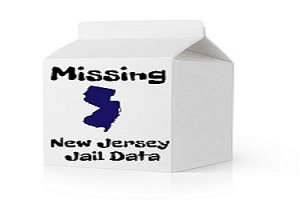Missing New Jersey jail data is becoming the norm. As previously reported in 2019 and again in 2020, New Jersey continues to play games with reporting bail reform data. Now, 2021 is devoid of data that is required to be supplied monthly. Why?
There can only be one reason. The data is not supporting the claims that bail reform will reduce jail populations, eliminate racial bias, reduce recidivism, and reduce cost. Reports on the Criminal Justice Reform Information Center site has proven that none of the intended goals have been met since bail reform began in 2017.
With the first quarter of 2021 already gone, absent from 2021 is any New Jersey jail data. New Jersey was publishing jail data monthly. However, no data has been published since December of 2020. Could it be the data is not supporting the bail reformist claims? Let’s take a closer look.
Jail Population Increasing
December 2020 jail population was at its highest population since March of 2018. The latest report from NJCourts.gov showed the jail population increased by 14% from December 2018 to December 2020. It is now at the same level as it was in December 2017.
2020 is far worse than it looks
The jail population was at a low of 4,092 defendants in April 2020 due to Covid concerns. A March 2021 report by the Bureau of Justice Statistics found the entire US jail population decreased by one-third between June 2019 and June 20. As of December 2020, the New Jersey jail population was 5,680. A whopping increase of 39% in just 8 months! So, while the rest of United States has seen a declining jail population, New Jersey has seen a large increase.
Reformists went on record early in 2017 to tout how wonderful “bail reform” was working. Jail populations were declining. The number of defendants being detained declined. It was not having adverse effects on violent crime. Those were the claims. In addition, they stated Jail cost would go down.
Four years later, where are the bail reform advocates?
Yes, the jail population did decline. However, it had nothing to do with bail reform. Virtually all of the jail population reduction was due to a procedural change among law enforcement. Prior to 2017, about one-third of all arrests were in the form of a citation. After 2017, about two-thirds of all arrests were in the form of a citation. After 2017, there were tens of thousands of less bookings into New Jersey jails. Of course, the jail population went down. Clearly, it had nothing to do with bail reform.
In addition, there are some who dispute the claim that there have been no adverse effects on violent crime. June Rogers would dispute that claim. Her son was murdered days after a convicted felon, Jules Black, was arrested with a handgun. A convicted felon with a handgun is a serious charge. Due to bail reform, Jules Black was released, without any conditions, within 24 hours of his arrest because a computer algorithm determined he was not a risk to public safety. A multiple convicted felon with a handgun is not a serious charge? Obviously, the algorithm is severely flawed. Could that be the reason the jail population has been steadily increasing?
Increased Costs
Cost to defendants and taxpayers increased by about $500 million since the New Jersey bail reform movement began. There is no indication the increasing cost trend will reverse. Advocates were definitely wrong again.
Bail Reform Advocates Wrong Again
Last, the purpose of bail is to ensure defendants release pretrial attend all required court dates and do not commit more crime after release. While no type of release can guarantee 100% compliance, bail reform advocates stated the use of taxpayer funded, government employees would result in lower failure to appear rates and less crime than types of release used prior to 2017. New Jersey data proves bail reform advocates were wrong once again. The failure to appear rate has increased 45% between 2014 and 2018. New crime committed while on pretrial release rate increased by 11% during that same period. In addition, there was no change to the percentage of defendants released or the racial makeup of the jail population.
Less Bookings = Higher Jail Population?
While the jail population is bad on the surface, it is far worse when truly analyzing. Due to Covid concerns, the New Jersey jails booked 25% fewer defendants in 2020 versus 2019. 2020 saw 32,896 defendants booked into jail versus 42,343 in 2019. Why is the New Jersey jail population so high? 10,000 fewer defendants booked into jail in 2020 than previous years. Yet, the jail population actually increased!
Should anyone be surprised?
That answer is a resounding “No”. A renowned economics professor testified about bail reform in 2014 before the New Jersey Senate. His testimony showed that there would be a substantial increase in cost due to bail reform. He was correct. He also stated there would be a reduction in the jail population initially. Over time, it would start increasing again. The professor was correct again.
New Jersey citizens should be incensed over the lies that bail reform advocates claimed. Chief Justice Stuart Rabner and the New Jersey courts promised data transparency. Citizens should be outraged that easily provided reports are once again being withheld.










